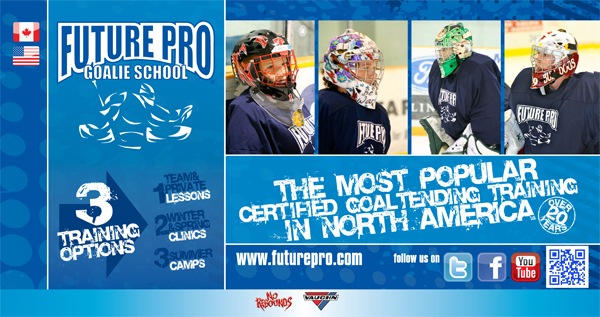From The Crease: The Equipment Conundrum?
By Jeremy Kaleniecki –
It is a well-known fact that each year the NHL evolves. Sometimes there are big changes while other times the changes are small and seemingly unnoticeable. As the game continues to change, everything else has to change with it.
The purpose of this article is to discuss not a change, but rather a lack of change that is causing a direct correlation on how goals are being scored. It is no secret that hockey is becoming faster. What would have been allowed years ago in hockey is now a one-way ticket to the sin bin. The game is much more open and players now have more time and space to make plays happen. With faster and more creative players, it is becoming more of a necessity for goaltenders to be more active and athletic in playing style and philosophy. These truths are self-evident and thus everything about goaltending should follow suit including new equipment.
As goaltenders are being forced to be more active, why is it that the equipment manufacturers are making less active and less mobile gear? The pads are straighter, stiffer, and more squared off than ever before. These new pad designs continue to cater to the blocking butterfly style of play. If you are a pure blocking butterfly goalie then these would be the best of the best. However, as I have already stated, even the biggest and most well-training blocking butterfly goalie is being forced to become more and more active.
What consequences are there then if pads are getting stiffer and straighter while goalies have to be more active and thus need more mobile equipment? The correct correlation would lead one to believe that there would be a direct impact on the way goals are being scored. If you came up with that answer, pat yourself on the back. This season, more so than in any other season in the past, goalies are giving up more and more “bad goals.” These “bad goals” are classified as goals that enter the net either through the body, underneath the body, or from poor angles. The new equipment, I personally believe, is directly responsible for goals that are entering through and underneath the body.
After watching over an hour of highlight film on the NHL Network I have come to the conclusion that the new equipment is responsible for these goals for two main reasons.
1.) The stiffer the pads, the looser they have to be worn to provide some type of mobility for the goaltender. The looser the pads, the less responsive they will be to the goalies movements. These movements include, direct knee drives, shimmies, and sliding butterflies. If the pads are less responsive, they will lack the speed necessary to seal off holes in and around the body, thus allowing more goals.
2.) Even when goalies wear the pads as loose as possible, they are still prone to restriction of movement. Being that the pads are straighter, they sit higher on the foot which causes them to play taller on the body. The taller the rise on the pad the more restriction a goalie will have moving around the crease. The tops of the pads will be prone to interfering with each other, the goal pants, and in some cases the gloves and arm pit holes. Due to the interference, goalies again are struggling to seal off areas which were no problem in years past.
The key to this article is not to pick and choose or favor equipment manufacturers, but rather to ensure that all goalies are educated about their playing styles versus the equipment they are looking at buying. If you are an active goalie, wear active equipment.
Steve McKichan created Future Pro Goalie School in 1992, and ever since, it has served as one of the top goaltending schools in the world. Find out more information about Future Pro by visiting their official website.



